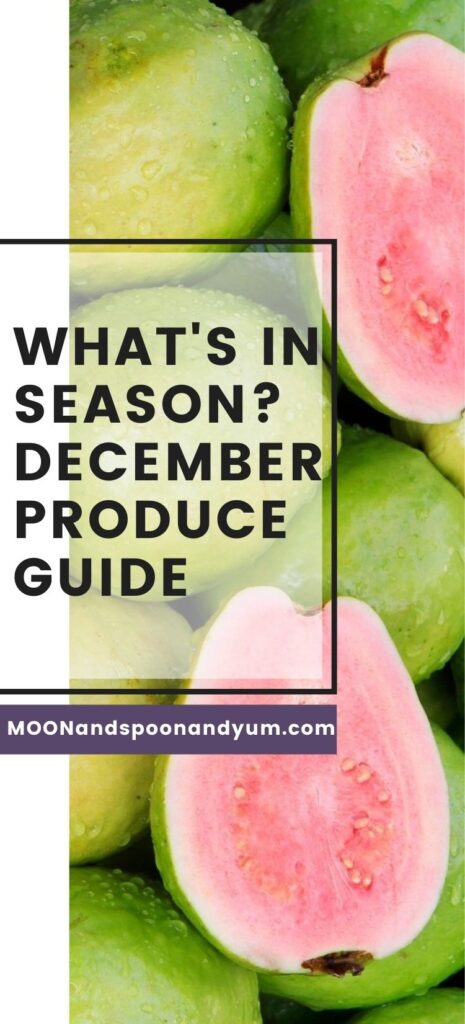What’s in Season? December Produce Guide
In this produce guide for December, you will find which seasonal fruits and vegetables are at their peak ripeness and perfect for eating this month! Enjoy!
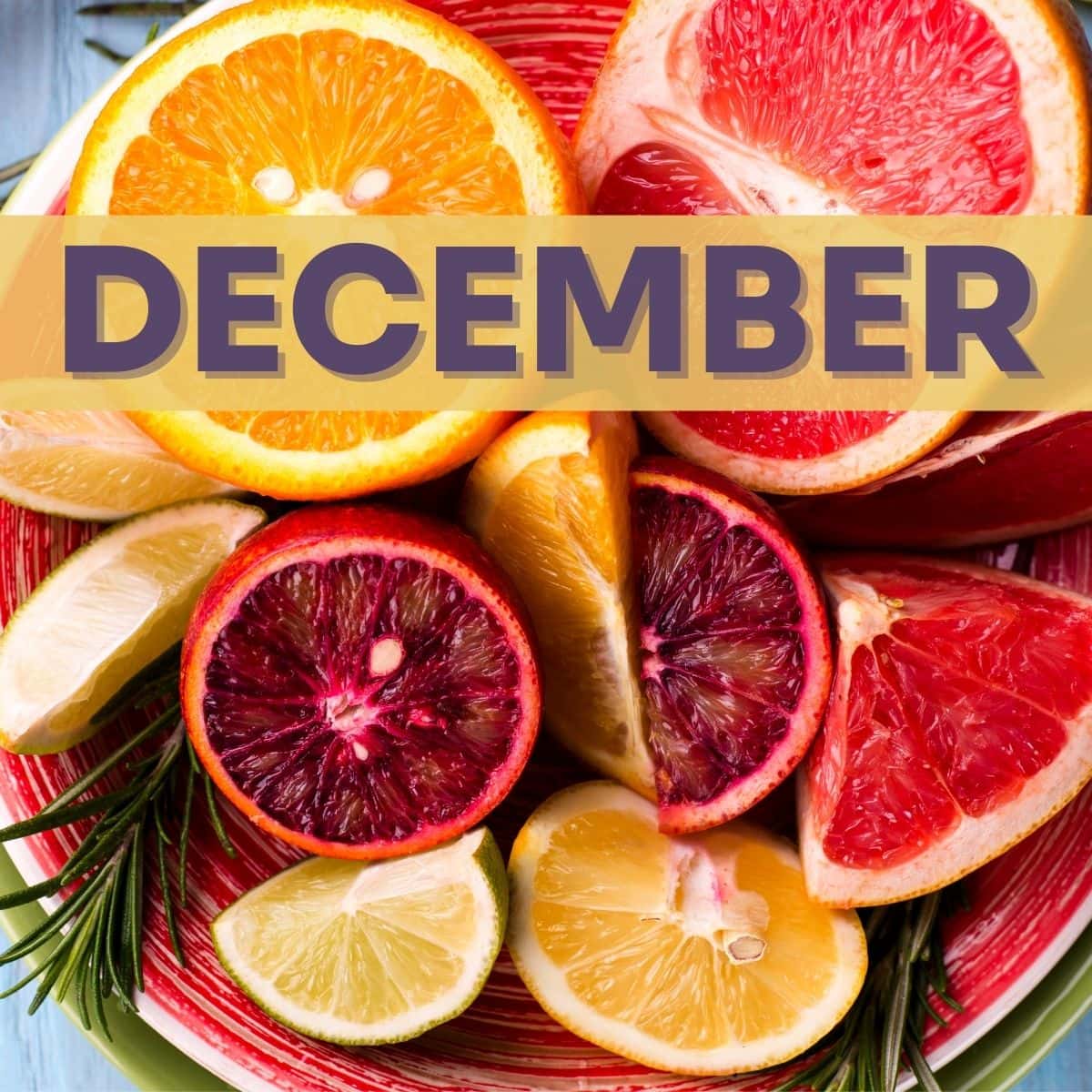
December is a month of celebrations across the world, and while the weather is cold in most regions of the US, gatherings that include delicious festive foods and cheer abound. Things growing may feel a bit sparse outside, but there are still hardy fruits and vegetables that are ripening out there this month. Citrus is popular in the colder months, and root vegetables do quite well even despite cold temperatures. As you shop for your fresh foods this month, keep these in-season fruits and vegetables on your list so they can nourish you with all of the goodness earth-grown food has to offer! Knowing what to look for while you shop is the best way to plan your meals and snacks with fresh healthy foods as the focus.
This guide is intended to help you along your way when it comes to meal planning, shopping, and knowing what to buy when you want to eat a well-rounded and healthy diet. Make your grocery list, and be inspired to create meals with the ripest foods! What I love most about so many fruits and veggies, is they often make perfect snacking on their own, so you can truly simplify your life with this monthly shopping guide. December has some delicious choices!
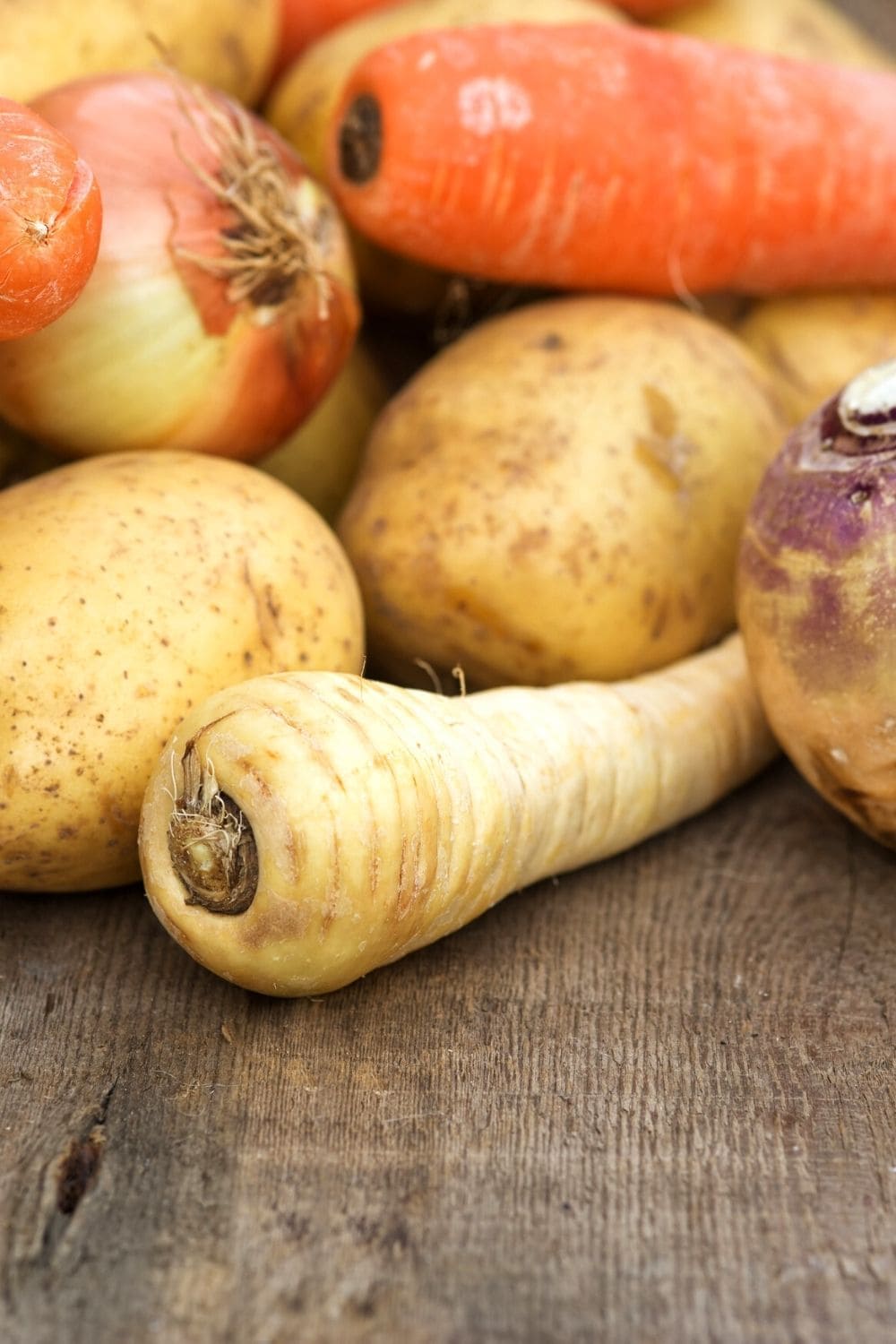
What’s In Season: December Produce Guide
December Seasonal Fruit
Here are the fruits you will find that are ripe and nutritionally beneficial for you in December, making for some delicious snacking, and amazing meals. December brings its fresh tart chill to its citrus fruits, packing healthful vitamins that you will want to have regularly this season.
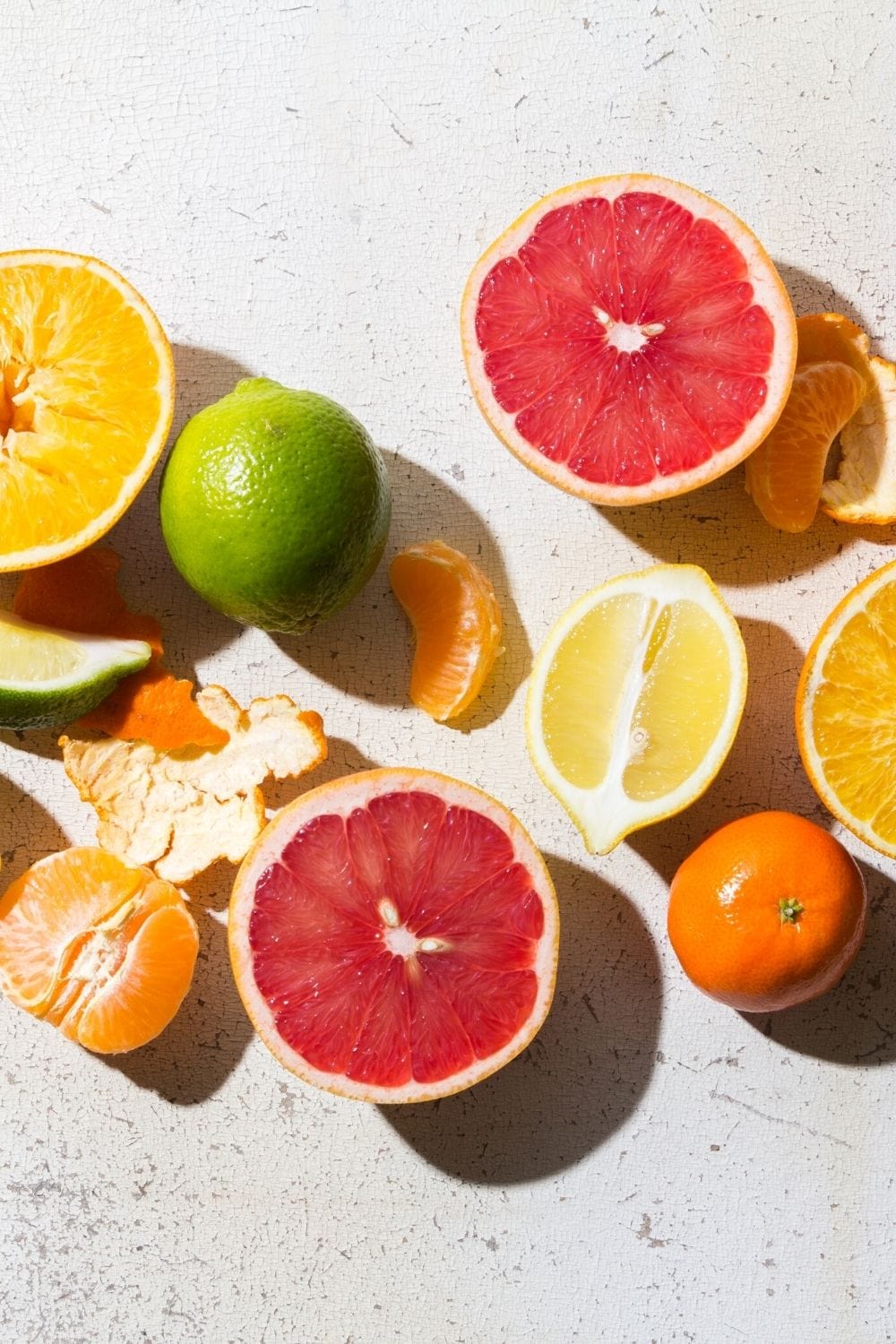
Grapefruit
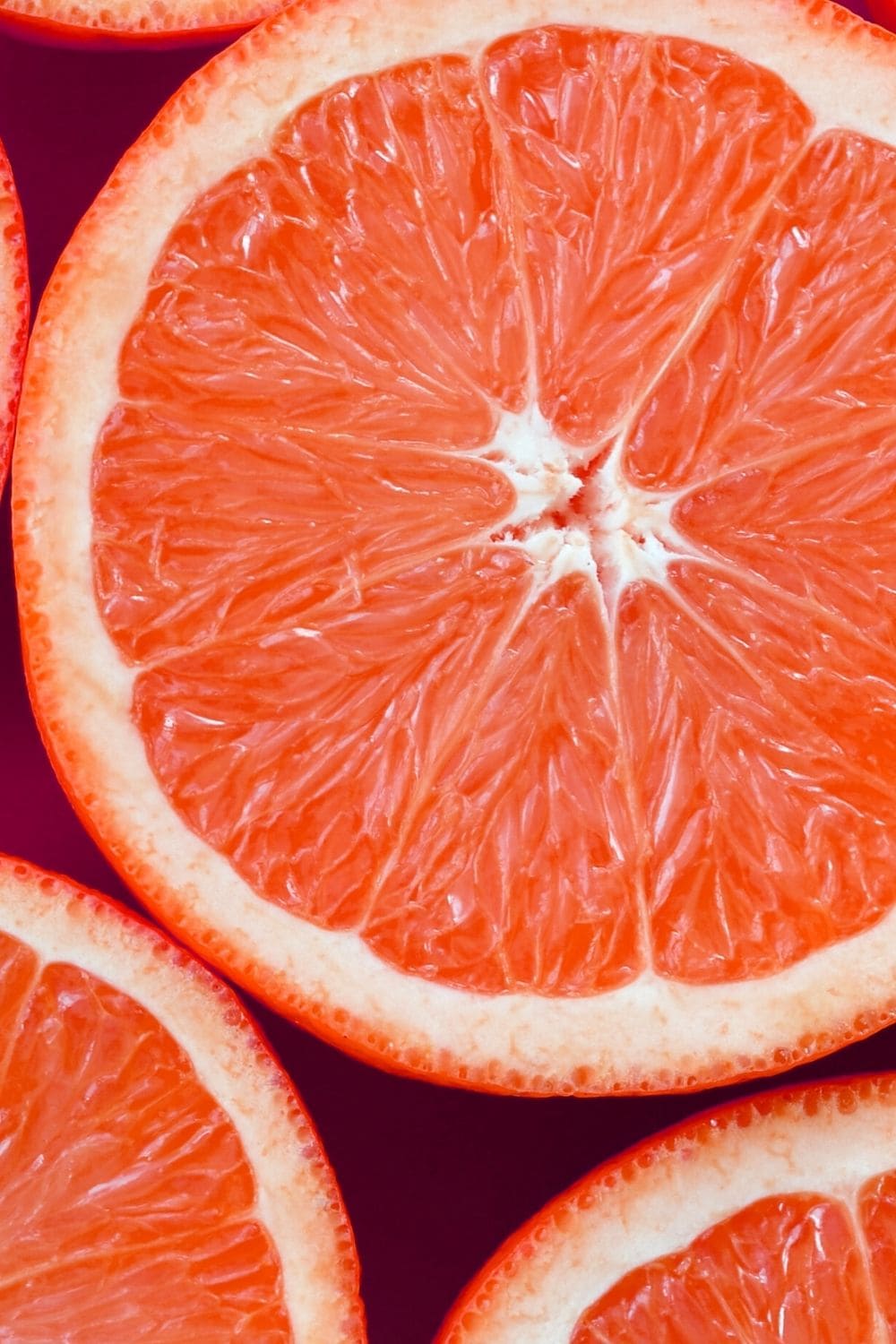
Winter is when citrus fruits are at their best and most ripe, and grapefruit is no exception! This lovely tart fruit can be cut in half and eaten with a spoon, cut up and added to salads, added to a smoothie, juiced, or made into a curd. Grapefruits can taste alarmingly tart to some, so if preferred, adding it to other meals and recipes is a varied way to get all of this winter fruit’s vitamin C and A, plus antioxidants into your diet. It is an immune booster, right in time for the season!
Grapefruit Recipes:
Clementines
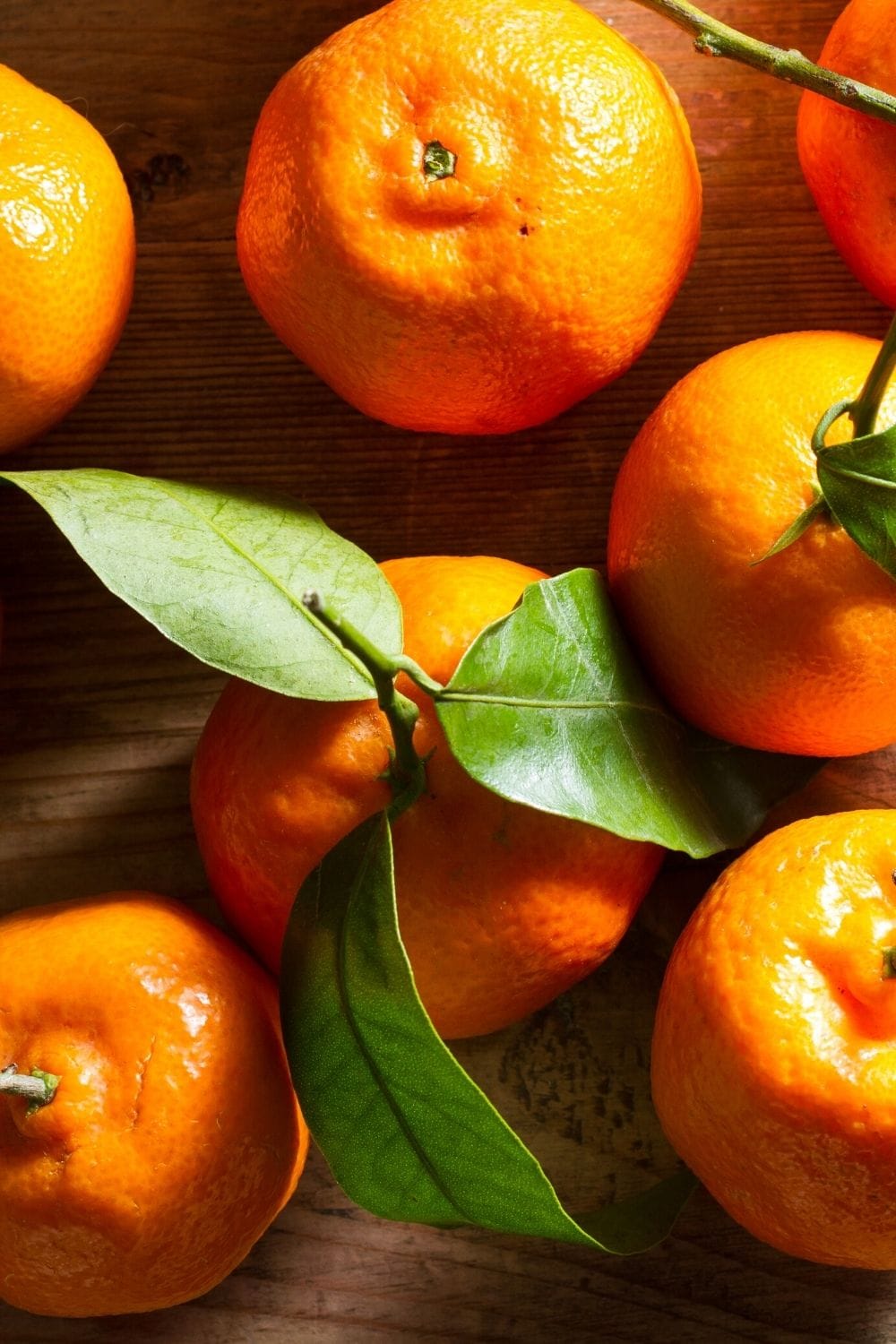
Clementines look like a tiny orange with thin skin, they’re easy to peel, sweet, and delicious to eat. These make lovely snacks on their own, perfect for little hands and appetites! Similar to a tangerine but smaller with shinier skin, you’ll know these little globes are ripe when they are slightly firm and their skin feels a little loose.
This small fruit packs a big immunity punch, just like most other citrus fruits that are high in vitamin C, antioxidants, and fiber. Clementines are delicious on cottage cheese, yogurt, oatmeal, salad, or on a charcuterie board for a little bit of winter sweetness.
Clementine Recipes:
Guava
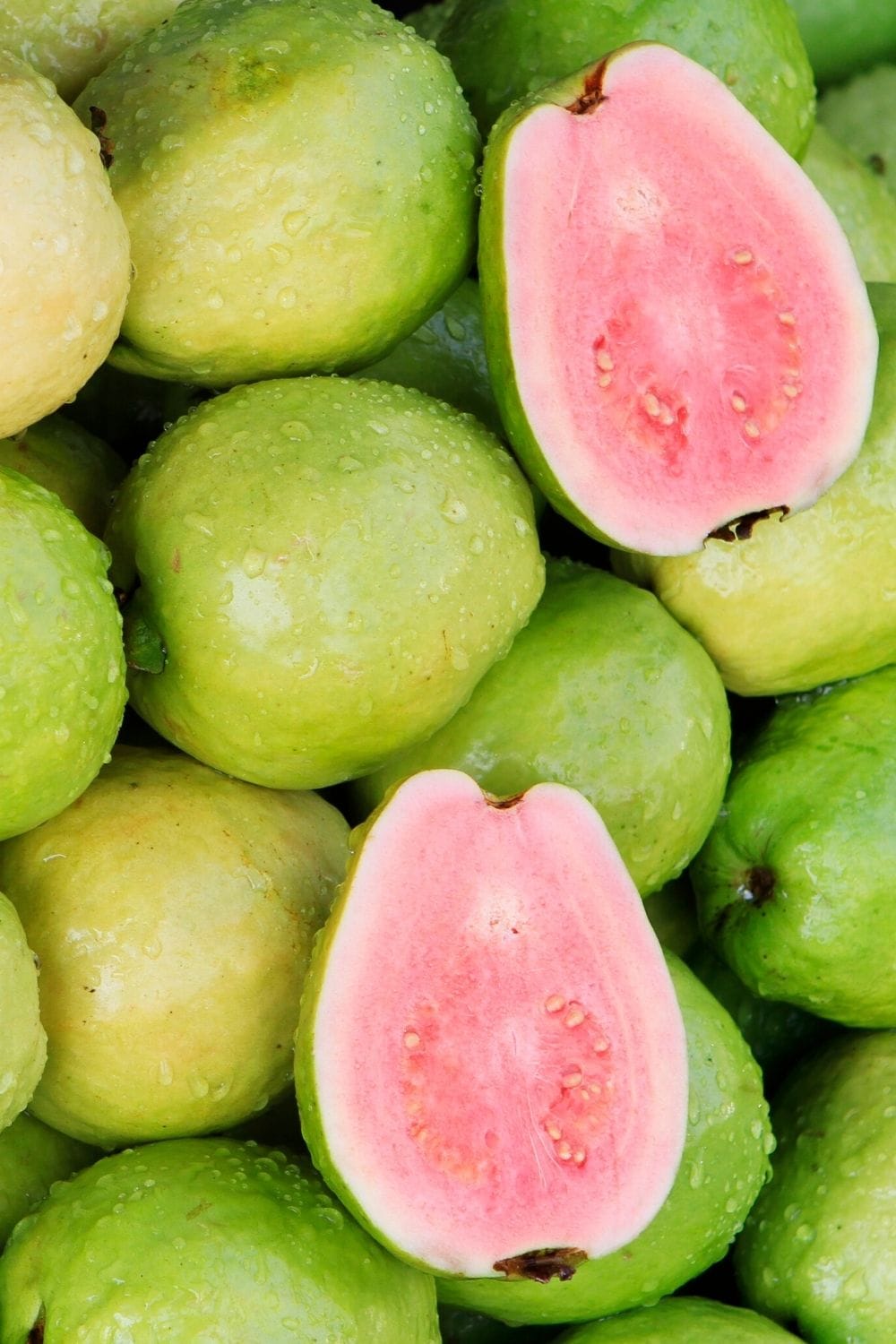
Guava is a tropical fruit that is shaped like ovals with light green or yellow skin, showing off with its deep pink flesh inside. This fruit has a sweet taste almost like a pear, and you will know it’s ripe when it’s slightly soft to the squeeze, and by its musky and sweet scent.
The entire guava can be eaten, including the rind and the seeds. It can be sliced like an apple and eaten raw, or if you prefer not to eat the skin it can be cut in half and scooped like you would an avocado. Guava is also delicious in salads, juiced, or dipped in peanut butter!
Guava Recipes:
Blood Oranges
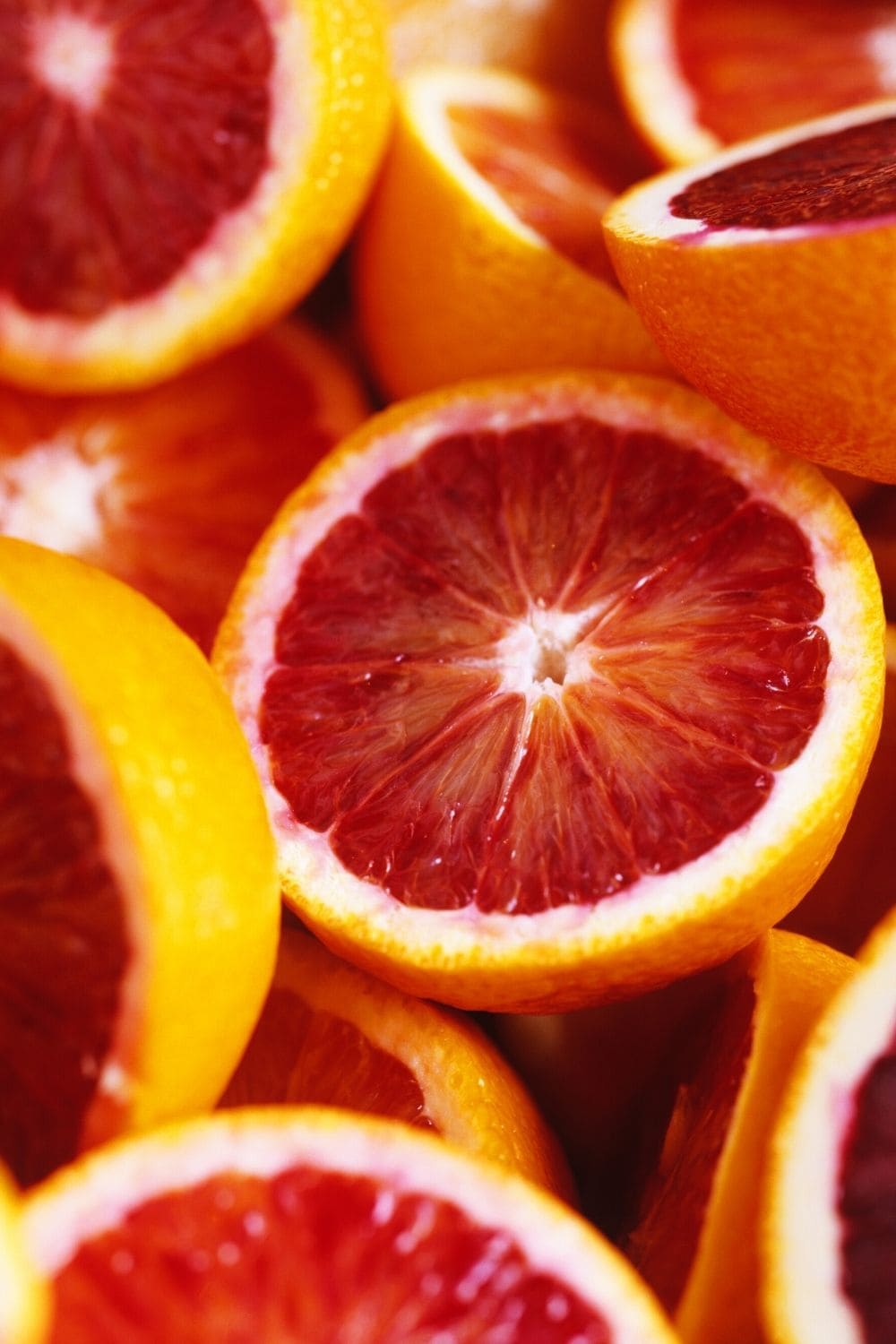
Blood orange is a variety of orange that has crimson-colored flesh uncommon in citrus fruits, lending a beautiful and festive look to anything you serve it with this winter. They are particularly high in antioxidants, and also boast vitamin C right along with other winter citrus fruits.
These beautiful and colorful fruits are delicious when eaten on their own, juiced, added to a salad, or used in recipes for their sweet and unique citrus flavor. Fully grown, a blood orange will be about the size of a tennis ball, and when they are ripe their skin will be a yellow-orange blush hue without any green.
Blood Orange Recipes:
Rosemary Champagne Cocktail with Blood Orange
Tangerines
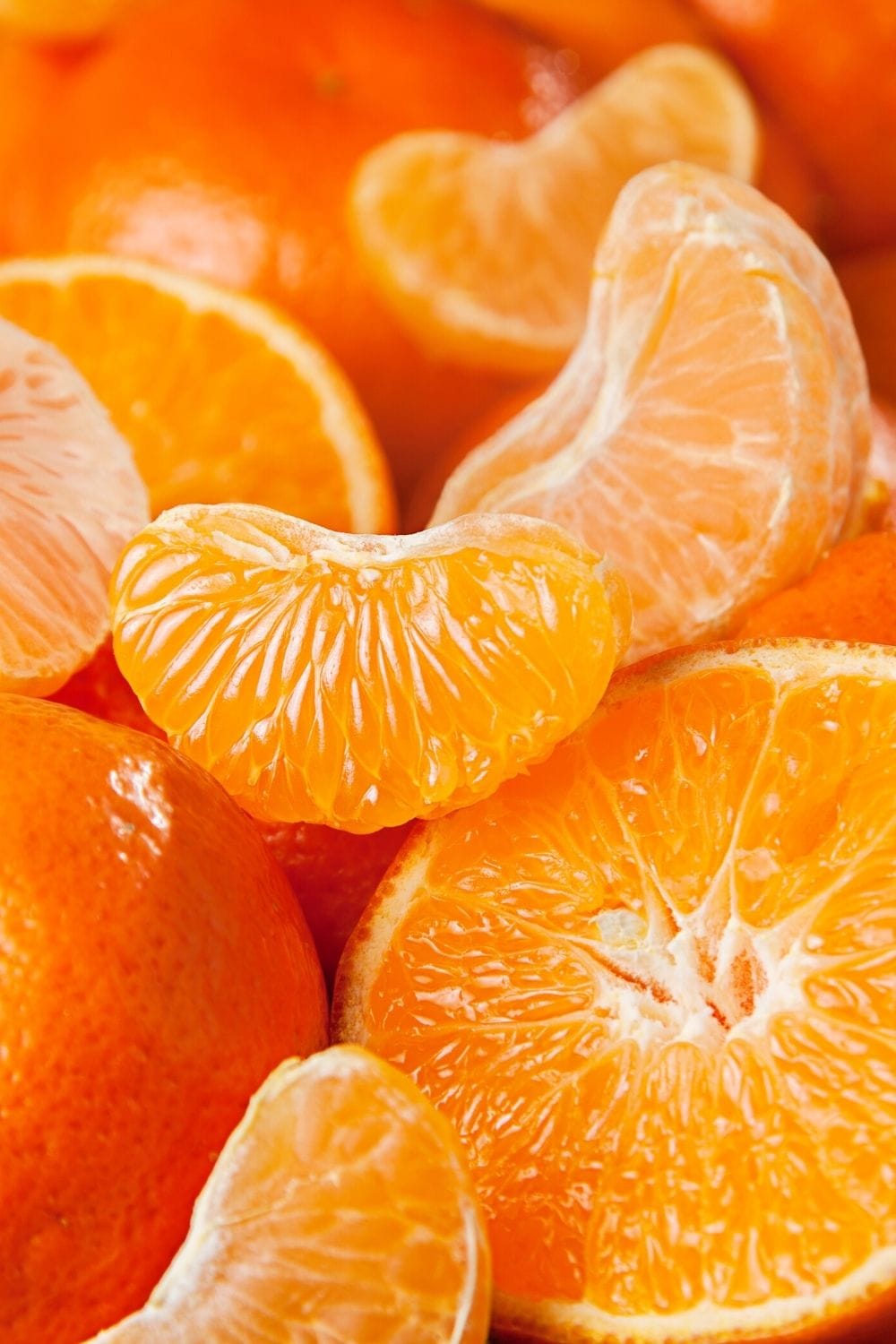
Sweet and delicious, tangerines are a citrus fruit that is perfect for snacking! They are nutrient-rich and pack a big immunity punch with many vitamins and antioxidants. Like many other citrus fruits, tangerines are known for improving digestion and blood pressure.
To tell if tangerines are ripe, you’ll want it to be slightly soft with pebbled orange thin skin. Similar to oranges in taste, except sweeter, they can be peeled and eaten raw for a simple snack great for everyone! They can also be juiced, added to smoothies, or baking recipes. Perfect for a bit of sweet with an appetizer plate, or tossed into salads.
December Seasonal Vegetables
Thanks to root vegetables and wet soil, December provides vegetables that are ripe this month despite cold temperatures. Knowing what to keep your eye out for while you shop is important to make sure you are eating in-season and as healthfully as possible. Spot some lesser-known root veggies and get ideas on how to eat them here!
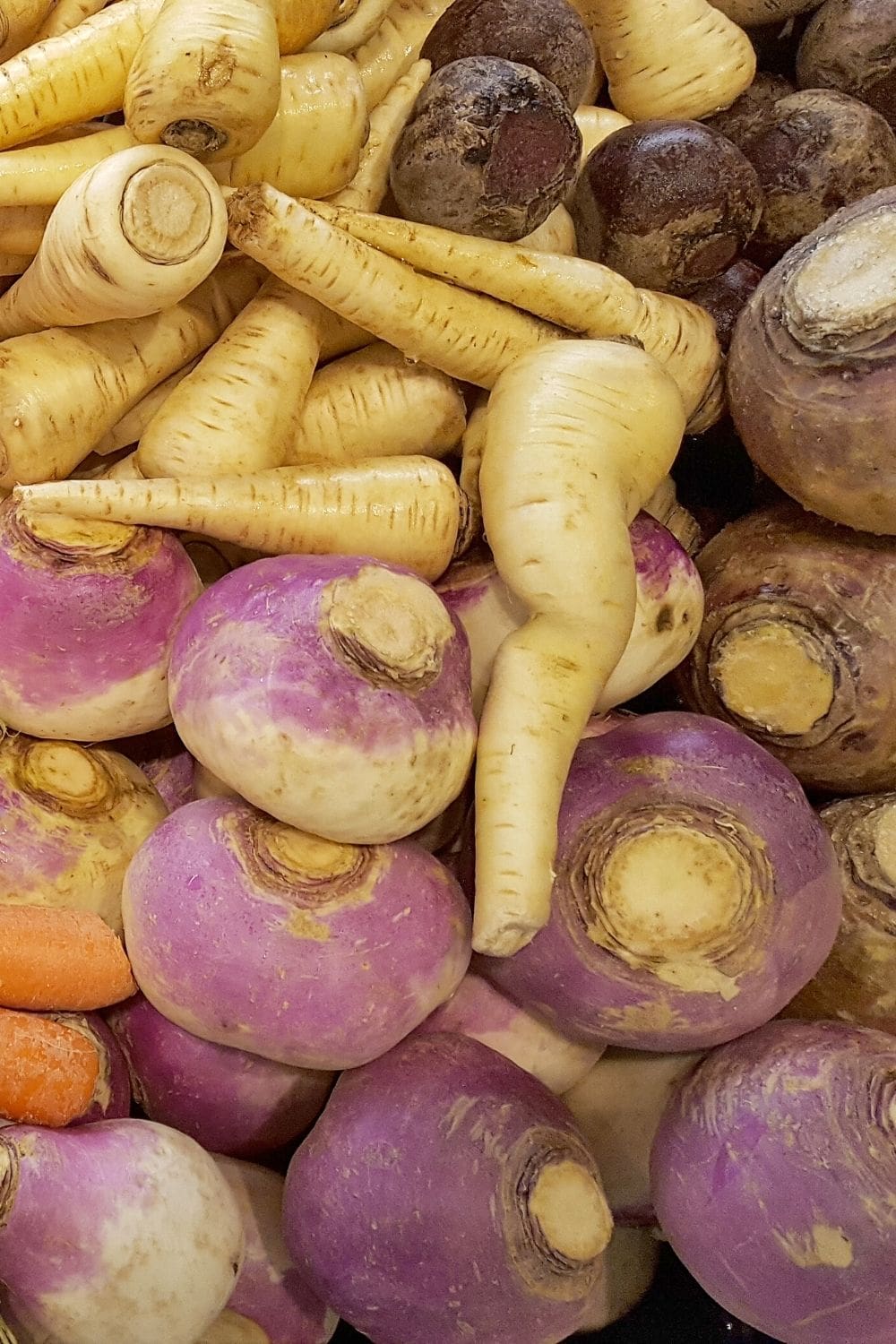
Celeriac
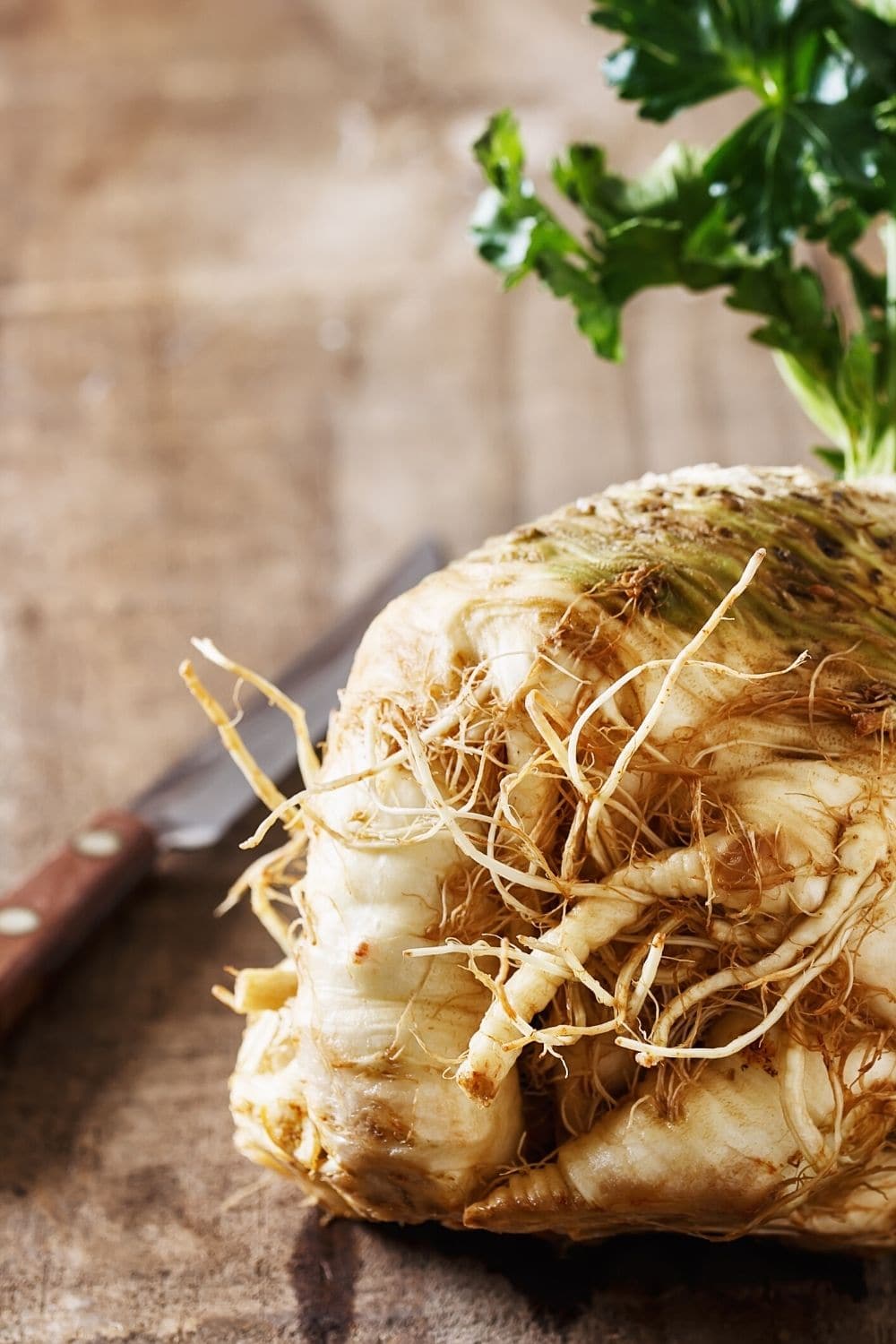
Celeriac *might* not be the most beautiful of vegetables, but it is delicious, healthy, and versatile. It can be roasted, mashed, thrown into a soup, or even eaten raw in a salad. Packing amazing nutritional benefits, celeriac is high in fiber, vitamin B6, C, and K, antioxidants, and minerals.
With knobby skin, you’ll want to peel the celeriac before eating or simply slice the skin off. This root vegetable is popular in salads, and is common to be used in the same way potatoes might be eaten. This is an easy one to grow in your own garden! Otherwise, you’re sure to find this in the grocery store, at a winter farmer’s market, or in your CSA box!
Celeriac Recipes:
Mary Berry’s Celeriac Remoulade
Mushrooms
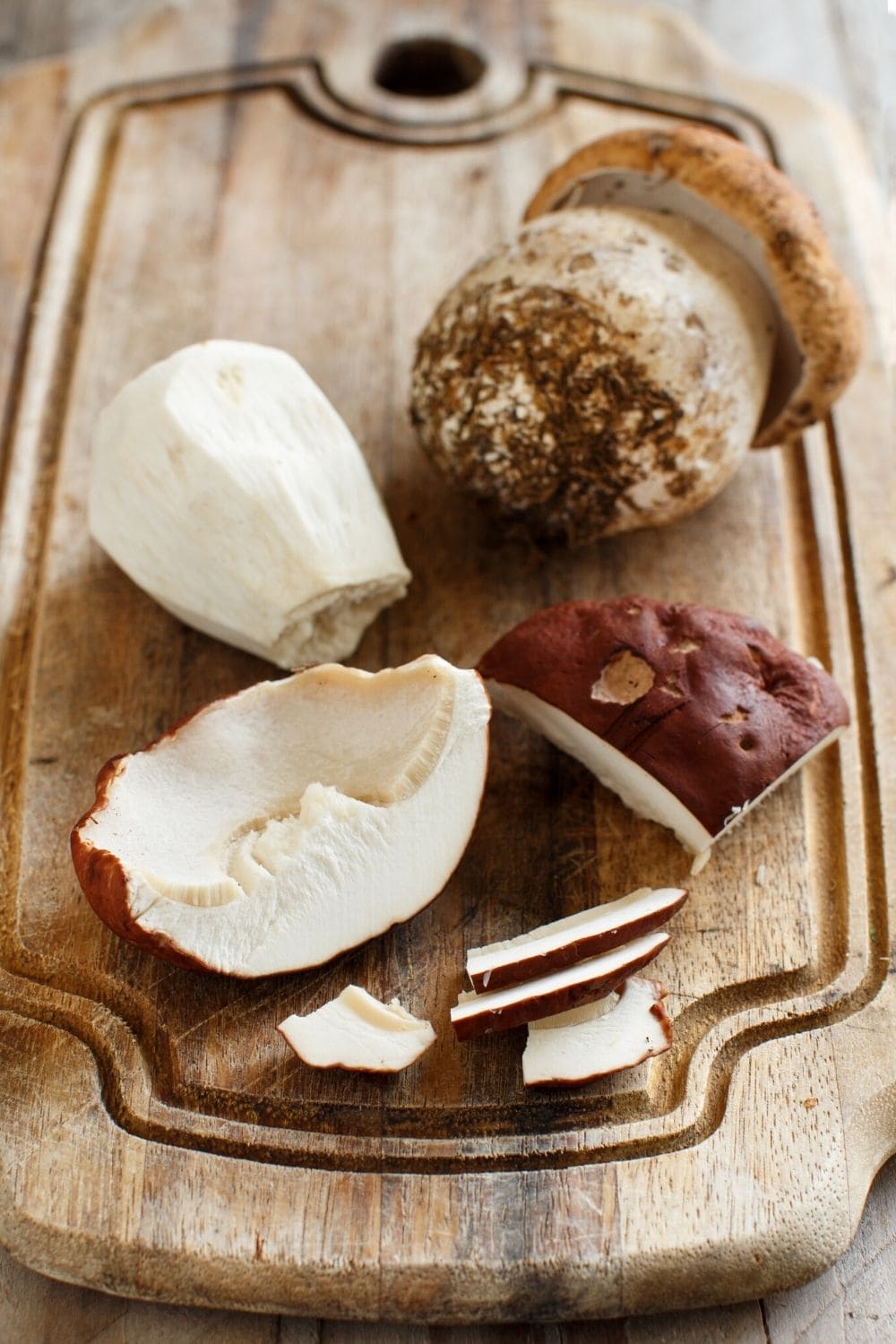
It’s true that mushrooms are fungi and not technically a vegetable, but they are raging in popularity right now so definitely needed a spot here! These amazing growths are cooked in many dishes right along with your veggies, and are a wonderful source of health benefits that are as wide and varied as the types of their fungi source! Mushrooms are a good source of fiber, protein, antioxidants, and most notably B vitamins, phosphorus, and vitamin D. They are also known for being good for the neurological system, and for preventing cancer.
When shopping for mushrooms, look for a firm, smooth appearance. You will want fresh mushrooms to be dry, but not dried out. You can however buy dried mushrooms that are simple to rehydrate and add to soups, stews, or stir-fries. Store-bought mushrooms can be rinsed and eaten raw, further you can slice them and throw them on a pizza, or add them to a wide array of recipes to boost the flavor and health of your meal!
Mushroom Recipes:
Herbal Healing Broth with Medicinal Mushrooms
Reishi Mushroom Infused Red Wine with Rose Hips and Ashwagandha
Parsnips
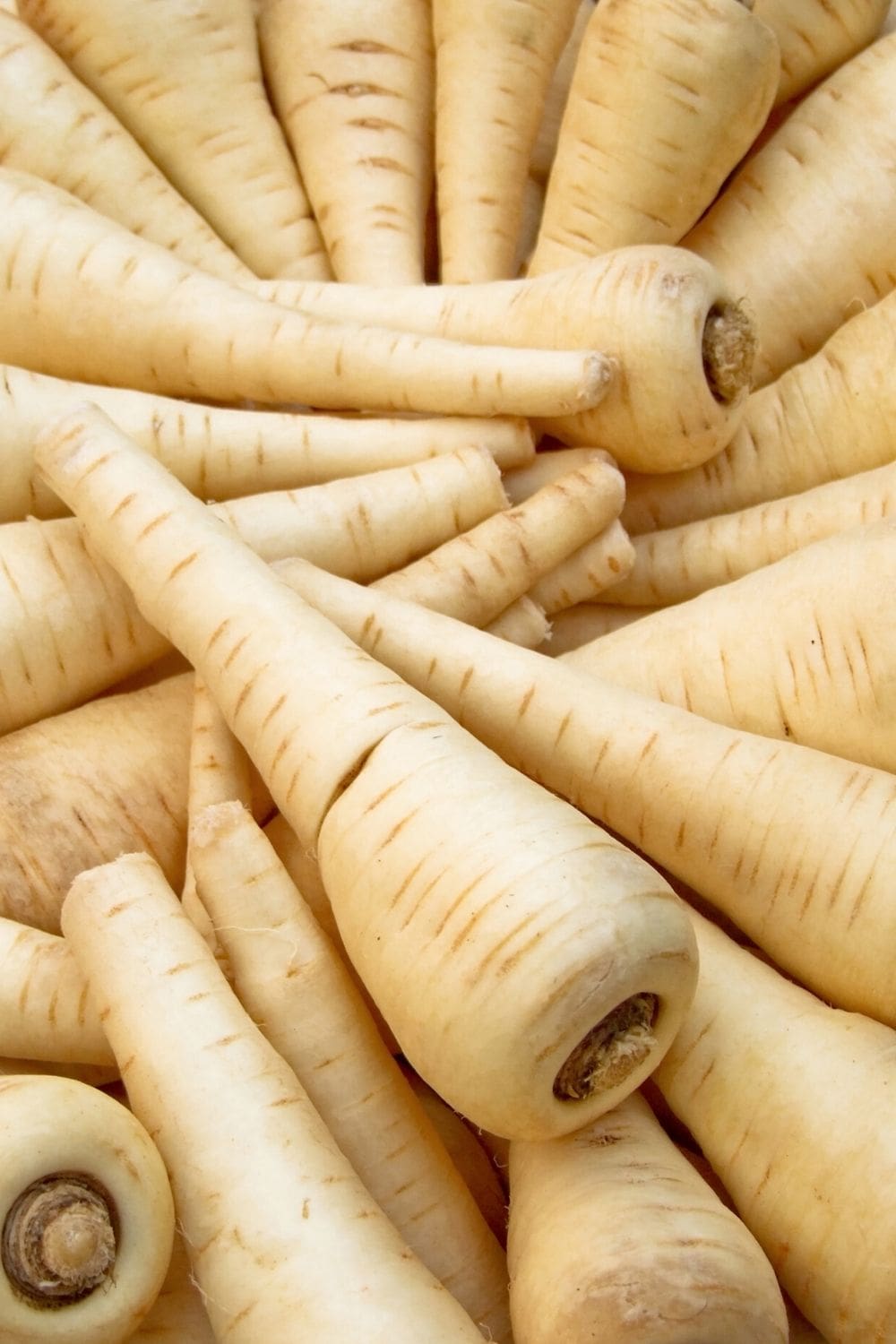
A delicious, carroty, root vegetable, parsnips are members of the parsley family and look similar to a large cream-colored carrot. They are sweet to taste and are a perfect winter side dish when roasted, mashed, or steamed. Like a carrot, they can also be eaten raw, and all you need to do is scrub them clean first. Parsnips boast vitamin C, potassium, and vitamin B6.
When looking for a perfect parsnip at the store, you’ll want to avoid the extra-large ones as they can be woody and bitter-tasting. Look for firm and pointy tips, and avoid any shriveled-looking ones. If buying fresh from a farmer’s market, note that you want to stay away from any attached greens because they are toxic and can cause a contact rash.
Parsnip Recipes:
Simple Roasted Root Vegetables
Potatoes
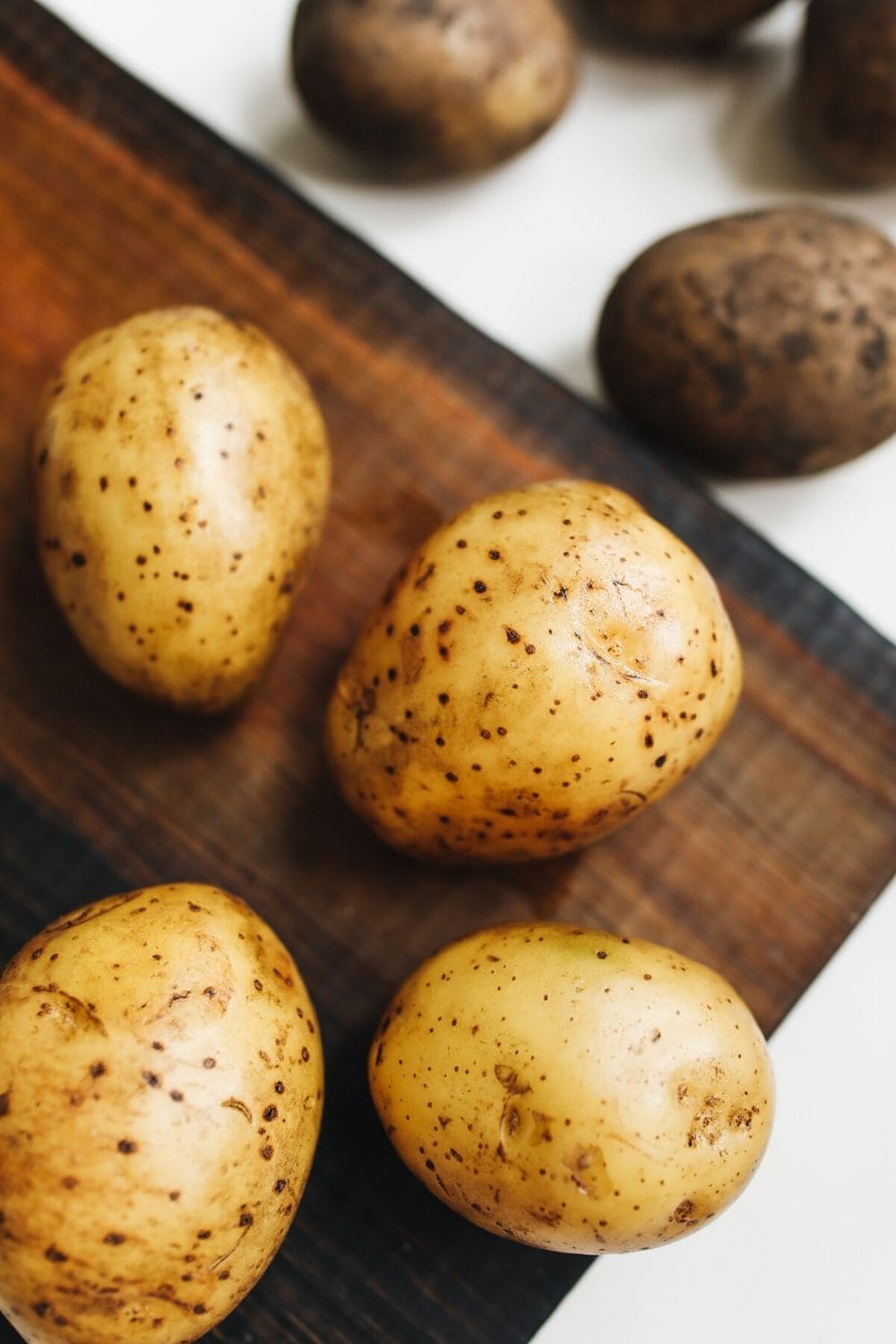
Practically the original comfort food, potatoes are a wonderful source of fiber, and they taste amazing and comforting cooked in a variety of ways including roasted, baked, fried, mashed, or creamed into a soup. There are many kinds of potatoes, from the popular baking and mashing Russett potato, red potatoes, purple potatoes, fingerling, sweet, and new potatoes to name just a few.
When shopping, pick potatoes that are firm, smooth, and without any sprouts or “eyes.” Avoid wrinkly skins, soft areas, or green areas. Personally, I’ve never eaten a potato I didn’t like, and knowing they are rich in fiber, vitamins, and minerals makes them even more enticing to eat in the wintertime!
Potato Recipes:
Crispy Air Fryer Potato Wedges
Instant Pot Duo Crisp Pesto Smashed Potatoes
Rutabaga
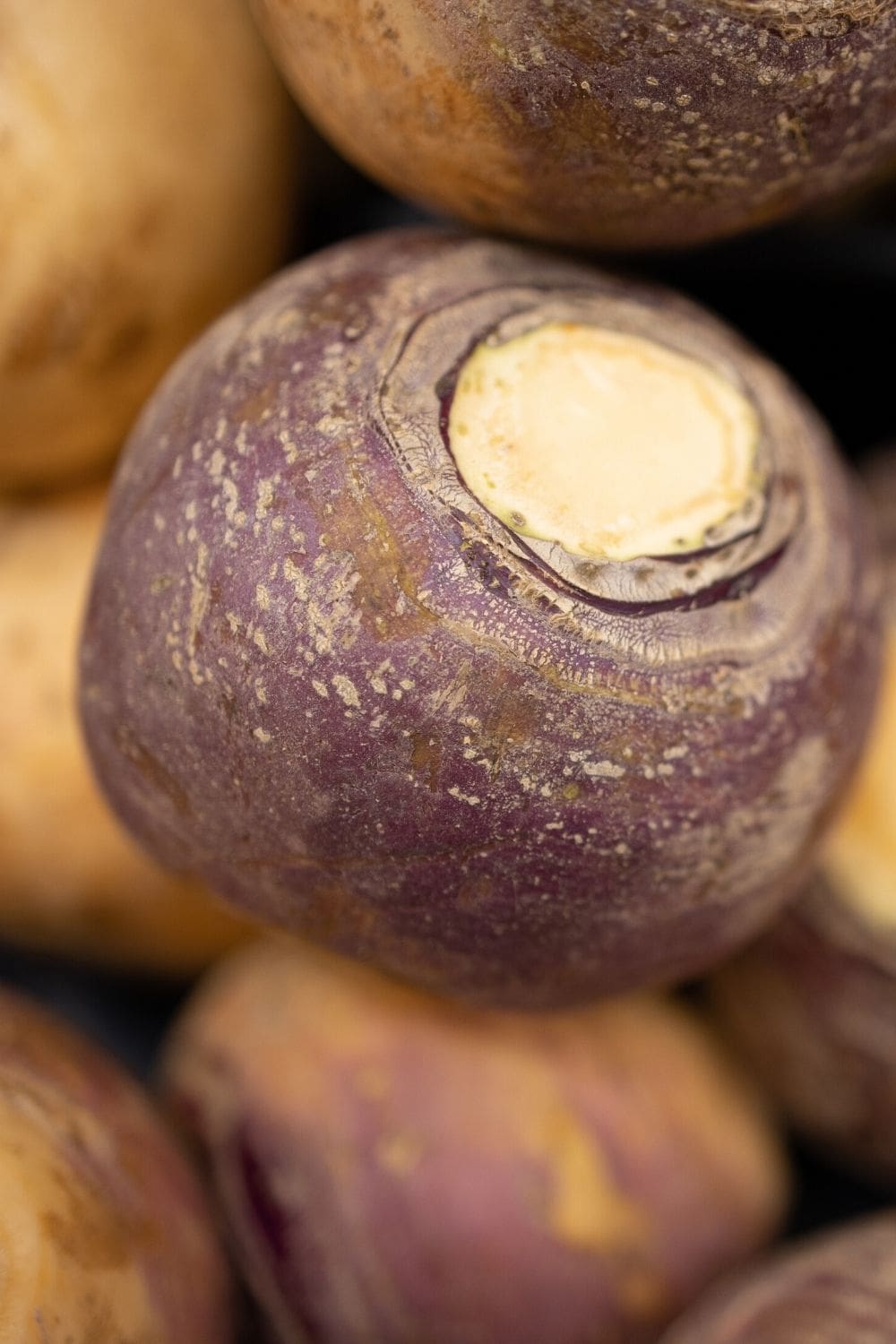
A personal favorite root vegetable of mine, rutabaga is a neutral and earthy-tasting vegetable that goes well alongside almost anything. They can be eaten roasted, cooked and mashed, or used in casseroles, soups, and stews. You’ll want to peel them in preparation for cooking, which can be easier with a paring knife rather than a vegetable peeler, due to their waxy skin.
Rutabagas are a good source of folate, high in antioxidants, and are packed with vitamins and fiber. At their ripest, rutabagas will be large and round with purplish skin, and yellow flesh underneath. If it has green shoots growing out of it, that’s a sign that it’s overripe. You just might have passed these by at the store since they are not the most flashy of veggies, but once you have one you’ll definitely want them in your winter rotation every year!
Rutabaga Recipes:
Rutabaga Noodles with Tahini Sauce and Cashew Crumble
December is cold and blustery in many places, but as you can see there are still plenty of fresh fruits and vegetables to choose from that are ripe, delicious tasting, and healthy for you. There are no true nutritional replacements for foods that are grown from the earth, so keeping a rotation of fruits and veggies is the best way to benefit naturally from all that these amazing foods have to offer.
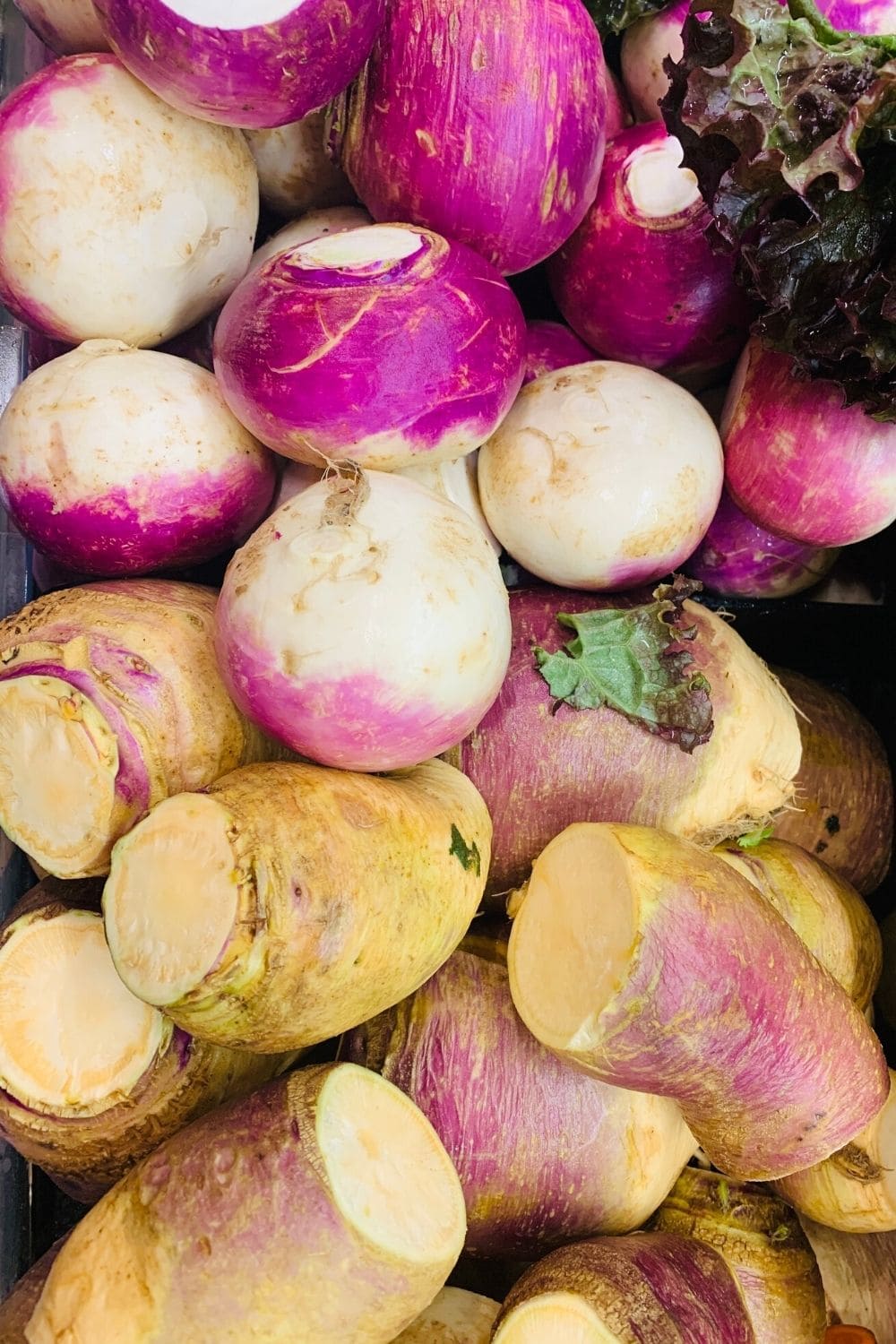
In Conclusion
My intention for this December Produce Guide is for you to be inspired to broaden the scope of the fruits and vegetables you are eating, and discover new ways to cook them and eat them for snacks and meals. Knowing what to keep your eye out for before you shop is the best way to plan your meals and make sure you get all of the healthy variety possible for you and those you prepare food for. Eating seasonally is the most wonderful way to celebrate the rotation of the earth as each month passes us by!

